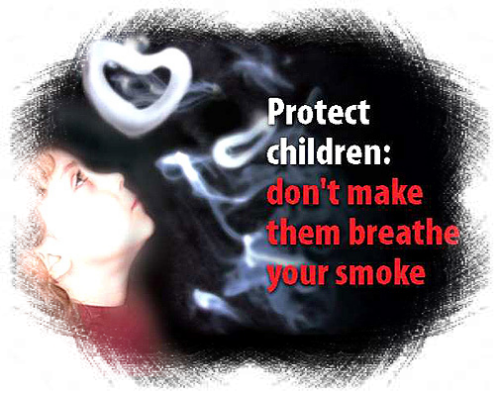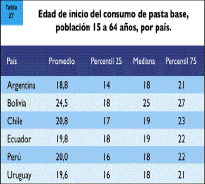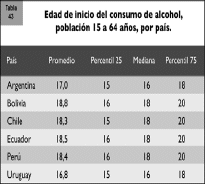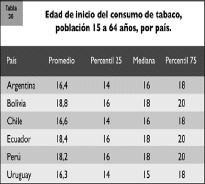Stratagems to help you quit and stay without smoking When you start smoking abstinence is inevitable that during the first days or weeks, occur any time the urge to smoke. Sometimes in the form of compulsion. The cravings do not last more than 1-2 minutes, pro is necessary to prepare a strategy to address this situation and thus avoid falling into relapse.
must UD. Prepare for when the craving appear. The strategies outlined below are a summary of experiences of resources used successfully by other smokers who went through the courses LALCEC to quit when this desire appeared. As in a building or car we have prepared a fire extinguisher to extinguish a fire is not expected to know very well where it is, when we stop smoking we know what to do if the urge to smoke appears.
This list does not end in itself and UD. can enrich it with their successful experiences to maintain their physical and mental health, supporting his decision: I do not smoke!
* If the cigarette gave energy and encouragement, I undertook daily walks steadily and fast pace.
* Make deep breathing and panting.
* Avoid calorie meals.
* If smoking is associated with pleasure make 5-10 deep breaths as if smoking until you feel the air in and out of your tubes. Breathe normally.
* Never carry more cigarettes nor has it at home, office or car. Nor ashtrays.
* Do not take up matches or lighters.
* Do not say quit but "I'm trying and working to not smoke."
* Try to Remember the other person quit smoking without becoming "heavy" .* UD. You have to learn to live together people who smoke.
* Commit to people I know. Comment that has put all his efforts not to smoke more and needs your help to provide it with no recurrence.
* Keep your hands busy. Do not be embarrassed if you put objects in their mouths to ease their anxiety. Worse is "pacifier carcinogen."
* Brush teeth systematically and immediately (always) after every meal including breakfast and lunch.
* Avoid desktop as performed while smoking. Modify your stage of smoking. Run to another room after brushing your teeth.
* Shower, if smoking really desperate. Hot water and finish with a cold soak.
* Take a walk after meals replacing desktops.
* Perform a daily 30-minute walk briskly or other strenuous physical activity.
* Every morning aside the money normally spent on cigarettes. At the end of the week Treat yourself to the money saved.
* Do not try to lose weight. Eat lots of fruits and vegetables, especially apples and carrots.
* If you are desperate for a cigarette, leave everything as is and take a walk 500 or 1000 meters, breathing deeply.
* Call or visit a friend who take longer than UD. without smoking.
* Close your eyes and count slowly and progressively to 20 .* Change your activities which consumed the most amount of cigarettes.
* If UD. smoked during prolonged activities (household or desktop) Interrupt every half hour, leave the room, do something else and return to the task.
* Avoid smoking more during the first month of abstinence.
* Remember the time it takes to quit smoking and consider whether it is worth wasting effort on the road already traveled.
* Carry sour candies and gum, or other similar substitute.
* Eat water whenever the urge to smoke appear. Eat at least one liter of water per day (one more than when smoked).
* Talk to everyone who has launched his war against smoking. Not against smokers.
* When you feel like slapping a cigarette, grabbed the phone and call a friend or fellow group or coordinator, who know their efforts to quit smoking.
* Never smoke. Smoking is a prejudice against yourself. It is true, and damage insurance. It is also a risk to your pocket, but above all, a serious risk to your health and that of those around you.
* Enjoy good health without snuff. If you do not smoke, your life will be like some 10 years longer, but above all healthy and happy.
* Do not be dominate. Beyond them, those who smoke, if you like playing with their lives, but they do not play with yours.
* The snuff is the greatest symbol of friendship which has ever been invented. Offering snuff is to provide poison to ruin health.
snuff
* From the best to be as far away forever. Do not let it control your will and your life.
* The satisfaction that you can presumably take the snuff, you can find in a thousand and one sites and safely in your pocket or your health.
* If you see any sign of smoke (and if not too), do assert your right to clean air. It is the first right of every living creature on earth acquired at birth.
* Smoking causes disease and addiction slave, whether man, woman or child, admit it or not. That's the reality.
* Do not hesitate if you see someone throws down a cigarette. Make him see that committing impropriety and disrespect others with their attitude.
* Think about the snuff only helps to do and think about when you will pick up and smoke another cigarette. The rest are fallacies infumables.
* Think that smoking is dangerous for you and your environment, perhaps to your family or your friends, but certainly for the entire planet.
* Do not play with fire burning just because they always suck Do a lit cigarette backwards? It is the same as the right, but a little later.
Summary: Being
smoking is bad business. Of course the pleasure of smoking only takes money to magnates, discomfort, bad taste, nausea, and spitting, bad breath, coughing, tiredness, etc. But worst of all, you can also get chronic bronchitis, emphysema, heart disease, cancer, a passport to eternity before time, etc. ...
Think about it before getting into this maelstrom, and if, unfortunately, you're stuck, do everything possible to get out. And remember: the act of smoking there is no zero risk, any amount of snuff consumed is harmful to you and others. Fight alone against the next cigarette.







